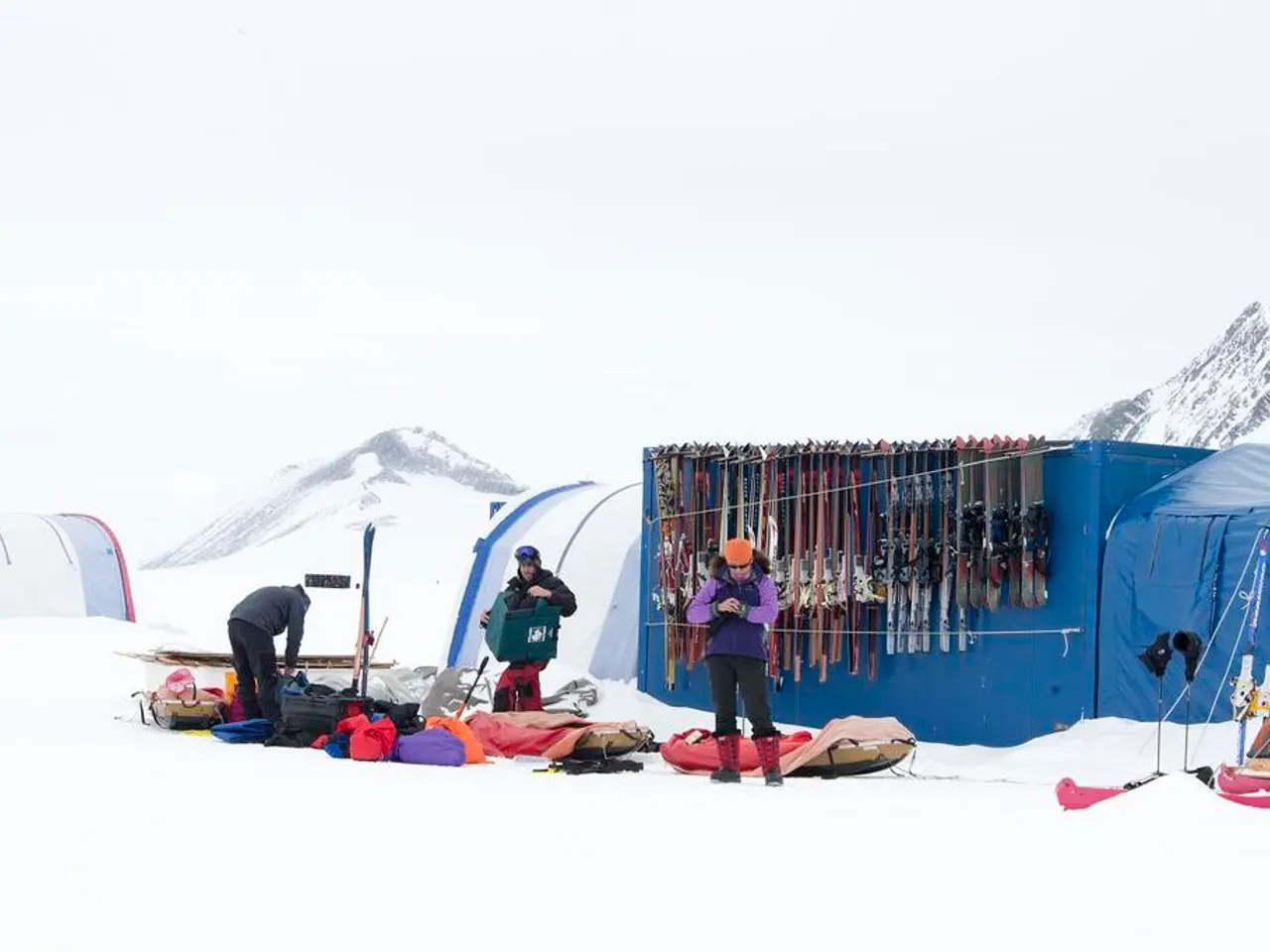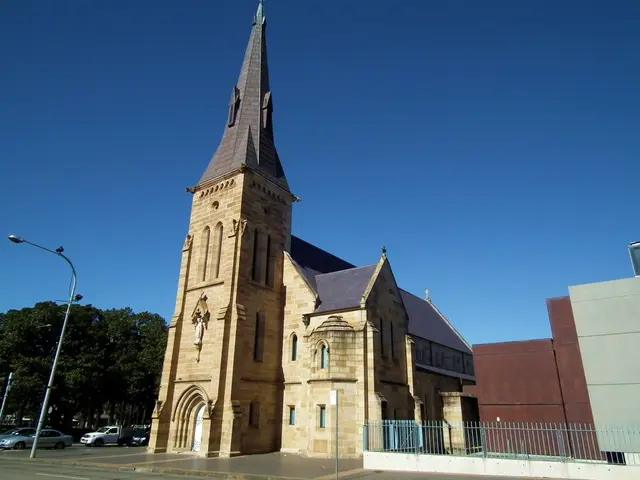Catastrophic flooding from an adjacent glacier in Alaska's major city has surpassed prior records, leading to forced relocations.
The Mendenhall Glacier area near Juneau, Alaska, has been experiencing yearly flooding from glacial lake outburst floods (GLOFs) since around 2011. This ongoing phenomenon, originating from a side basin called Suicide Basin, has become increasingly severe in recent years.
The flooding is caused by the water from the basin creating enough pressure to force its way under or around the ice dam created by the Mendenhall Glacier. This year, city officials took preventive measures by installing a temporary levee along roughly 2.5 miles of riverbank to guard against widespread flooding, using around 10,000 "Hesco" barriers.
In 2023 and 2024, record floods occurred, with the river cresting at 15.99 feet in 2024—about a foot above the previous record from 2023. The flooding was even worse in 2025, reaching major flood stages above 16.5 feet, prompting evacuation warnings and widespread damage to hundreds of homes.
Temporary flood barriers help mitigate damage but do not stop flooding entirely. Experts estimate that the outburst floods will likely continue for 25 to 60 years as long as the Mendenhall Glacier remains the ice dam sealing Suicide Basin.
The U.S. Army Corps of Engineers is conducting a technical study on Mendenhall Valley glacial lake outburst flooding to explore long-term mitigation options. Although specific permanent solutions under consideration are not yet detailed, such solutions could include engineered drainage tunnels, permanent flood control structures, or glacier modification measures.
However, due to the glacier’s natural dynamics and continued retreat, permanent mitigation is complex and challenging. The timeline for a more permanent solution has angered some residents, who find it unreasonable.
The temporary levee, intended to protect more than 460 properties during an 18-foot flood event, has been put in place this year. Despite these efforts, the flooding remains a persistent hazard in the Mendenhall Valley area.
This article also mentions incidents of flooding in other locations, such as an Alpine village in Switzerland and southeastern Oregon. The Mendenhall Glacier, a popular tourist attraction, is located 12 miles from Juneau, Alaska's capital city.
[1] Associated Press. (2025). Flooding in Alaska's Mendenhall Valley continues to pose threat. Retrieved from https://www.apnews.com/article/climate-and-environment-floods-alaska-juneau-965e6286d7c1721303e456c8c166309c
[2] Bohrer, B. (2025). Alaska's Mendenhall Glacier continues to pose flooding threat. Retrieved from https://www.apnews.com/article/climate-and-environment-alaska-juneau-floods-glaciers-e1d8405a51a991f8f598d90192c6482e
[3] U.S. Army Corps of Engineers. (2025). Technical Study on Mendenhall Valley Glacial Lake Outburst Flooding. Retrieved from https://www.usace.army.mil/Missions/Civil-Works/Studies-and-Assessments/Mendenhall-Valley-Glacial-Lake-Outburst-Flooding/
[4] National Oceanic and Atmospheric Administration. (2025). Mendenhall Glacier Flooding Fact Sheet. Retrieved from https://www.noaa.gov/media-release/mendenhall-glacier-flooding-fact-sheet
[5] City and Borough of Juneau. (2025). Mendenhall Glacier Flooding Response. Retrieved from https://www.juneau.org/2153/Mendenhall-Glacier-Flooding-Response
- The ongoing GLOFs in the Mendenhall Glacier area, Alaska, have raised concerns about the impact on public health and increased the urgency for science-based solutions to combat climate-change and protect the environment.
- In California, government officials are closely watching the weather patterns and weather-forecasting data, considering the potential risks of similar glacial lake outburst floods in the future, given the close link between climate change and weather events.
- As the repercussions of climate change continue to manifest, the environmental science community is actively exploring long-term mitigation strategies, such as engineered drainage tunnels and permanent flood control structures, to address the growing threats of GLOFs in various locations.
- On a global scale, climate change and its effects on glaciers and weather processes are essential topics for scientific research, as understanding these processes can help predicte and prevent potential future disasters, such as the devastating floods seen in Alaska and other locations around the world.








